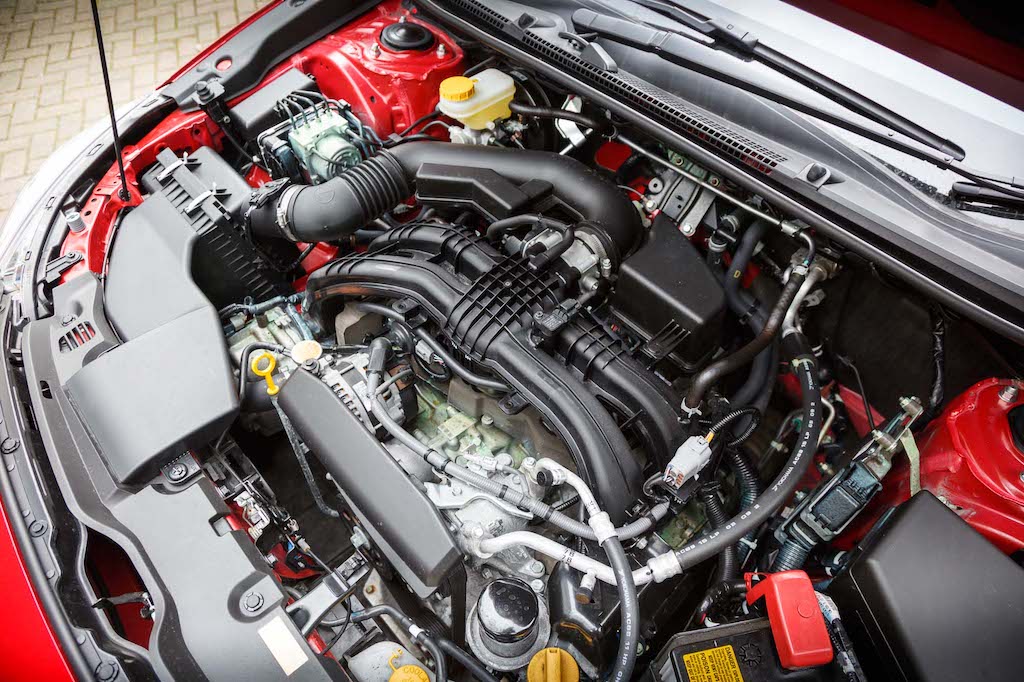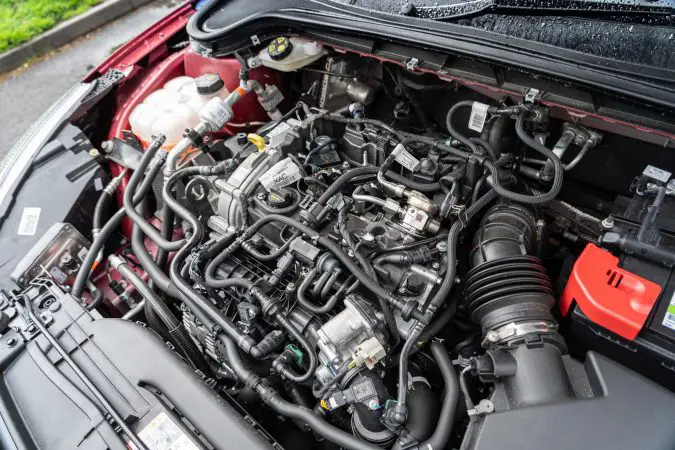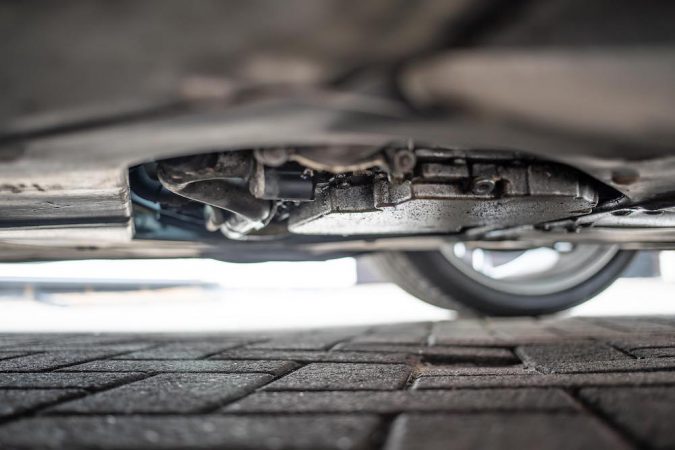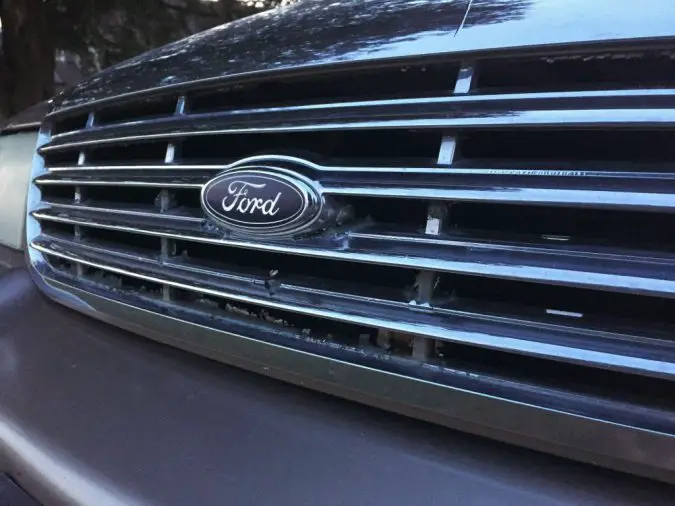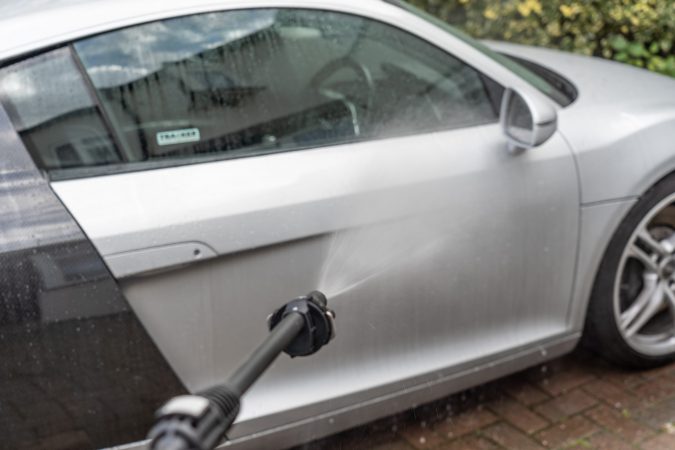It perhaps shouldn’t be surprising that your car generates a lot of heat. From the massive engine and its many controlled combustive explosions, to the electrifying wiring and pressurised liquids… They are major generators and transmitters of heat. Most car engines are made to operate up to a toasty 250°F. It’s only able to avoid bursting into flames thanks to its clever cooling. Though every once in a while, it gets a bit too hot, prompting thoughts like how much is a radiator replacement cost?
Not something you’d consider all that often, but it does get asked. The radiator, after all, is the main instrument in exchanging away all that heat into thin air. Without it, plenty of machines, besides all our beloved automobiles, may not be able to work for too long before overheating. For that reason alone, it’s vital that one takes good care of their car’s cooling, lest they’re willing to let the engine fail entirely. So, let’s take a look at just how much the common radiator replacement cost truly is…
- What Is A Radiator?
- Parts Inside A Radiator
- Coolant
- Causes For Failure
- Symptoms
- Fixes And Costs
- Conclusion
What Do You Need To Know About A Radiator, And How Does It Work?
The radiator is a prominent part of any vehicle. Unless you’re driving a mid- or rear-engine car, or an EV, the radiator is almost always found near the front. Sitting behind the front fascia, the radiator is left exposed, sucking in cool air from the front grille and vents. A radiator is essentially a big heat exchanger. With internal combustion engines, it’s being cooled by special liquids called coolant. They are formulated to carry the heat from the engine, and then circulate that with them to the radiator.
The radiator exposes them to the atmosphere, where the coolant will lose heat. Once it’s cooled down, it shall then be circulated back to the engine, and the cycle continues. If you look at how a radiator has been designed, you can see that there are numerous fins along the outer side that meets with the cool air. These fins are made to increase the available surface area as much as they can, thus allowing it to get exposed to the cooler outside air. Hence, this increases its cooling capabilities.
If you are looking for car air conditioning repair in Melbourne visit Natrad.
What Are The Parts Within The Radiator?
This will no doubt be information pertinent to us discussing radiator replacement cost, so we may as well talk more about the parts that you can see within and on the radiator itself. Although it may seem like a simple piece of componentry made to cool down a steaming hot car, it is quite complex and intricate. With all those constituent parts, the radiator can effectively cool down your car. So, here are some of the more vital bits and pieces that your radiator has to work with.
1. The Radiator Block
This is the core pièce de résistance of your radiator – the block itself. As we noted earlier, the heat exchanger portion along the front is arranged in a honeycomb or web of tiny fins to rapidly dissipate the heat. Inside, there is a series of tubing that flow hot coolant into the block, and then carry away cool coolants back to the engine. There are, actually, varying types of radiator designs, classified by their ‘core’ types.
The first is a ‘tubular’ core type radiator. Here, the upper and lower tanks of the radiator are joined together by a collection of tubing, which circulates water or coolant around the radiator block. There are fins located around the tubes for the most efficient heat transfer, which the fans will then carry heat out to the atmosphere. As cooling is reliant on these tubes, faults or clogging up on just one of the tubes can affect the cooling performance.
Then, we have ‘cellular’ core radiators. With these types, we have a reverse, where water or coolant flows in spaces between the tubes, and the tubes themselves carry air. These “spaces” are air cells or pockets within the radiator, which are then surrounded with coolant. The cells are usually hexagonal in design, hence why they’re often called ‘honeycomb’ radiators. With a cellular core, clogging of any tubes is a smaller loss and doesn’t terribly affect the cooling performance.
2. Galleries
These ‘galleries’ – or ‘tanks’, as they’re sometimes referred to – are channels that are cast onto the engine block, cylinder heads, or any other places that surround the combustion chamber. Through the galleries, the coolant can flow to carry away heat to the radiator, and then return in its cooled form. It’s worth mentioning too that in some cars, the radiator is responsible for cooling more than just the engine.
Certain vehicles have a transmission cooler. More high-performance cars even have a separate radiator just for the transmission. Commonly, though, you’ll find the singular radiator up front doing all the work. Transmission fluid flows to your engine through steel pipes, which are surrounded by coolant around them. This will then cool down the transmission fluid, which would flow back to the gearbox.
3. Water Pump
Although called a “water” pump, the pump itself would instead circulate coolant. Usually of a centrifugal design, the pump forces and rushes coolant to circulate around throughout the rest of the cooling system. This includes pushing the hot coolant into the radiator, and then pulling away from the cold coolant back to the engine.
4. Fan
Sometimes, it’s not enough to rely on cold atmospheric air to rush through your car and cool down the hot engine. What if you’re sitting still in stop-and-go traffic? This is why there’s a fan – or at times more than just one fan – on the radiator, either in the front or back. It functions to forcefully draw in as much of the cool air as possible from the outside. Not to mention, it should help to somewhat cool down the hot coolant on its own.
5. Thermostat
Often located on or near the water pump, the thermostat is responsible for measuring the scorching temperatures of the coolant. When the engine gets too hot, the thermostat senses this. It will then start circulating the coolant along to the radiator, where it thus be cooled. The thermostat, working with the coolant-cum-water pump can vary the volume and flow of the coolant itself. When there’s an overheating issue, the thermostat is also what warns you through a dashboard warning light.
How Does Coolant Come Into Play?
One key factor for when you need to worry about a radiator replacement cost, is the coolant. As we’ll get more into it in a little bit, most radiator-related problems are caused by coolant, such as poor maintenance and servicing of said liquid. So, what is coolant, anyway? Well, coolant is a liquid that’s been specially formulated as a good conductor of heat. It needs to do well in that regard, as it goes through changes in temperature quite regularly, from nearly boiling hot to cold.
Coolant is usually water-based, though it can be oil-based in nature. However, water-based coolant is left in its purest form in certain climates where water doesn’t freeze. In colder weather, you’re likely to mix in a bit of antifreeze into the coolant mix (including a bit of water) to prevent it from turning into a solid. Anti-freeze is made from ethylene glycol or propylene glycol. Seeing how much aluminium and metals there are in a car, the antifreeze would ordinarily have corrosion inhibitors.
There are also various different types of coolant solutions out there. The most common type is IAT, or ‘inorganic additive technology’. It’s often not used as the factory fill, likely owing to how fast it depletes and requires a change. However, they do offer exceptional corrosion protection. Certain brands of cars have their own mixture too, such as how GM-built cars use OAT – or ‘organic acid technology’- whereas Chrysler and Ford cars use a lot of HOAT (‘hybrid organic acid technology’)
When Should You Be Servicing Your Coolant?
Regarding coolant, our best recommendation for this radiator replacement cost guide is to always check your owner’s manual. Even within a single brand, different models of cars may use differing coolants, each tailored for every vehicle. As such, you’ll need the owner’s manual to tell you exactly what type of coolant you need. More importantly, there should be some advice in there as to when you’ll need to flush and change your car’s coolant, an interval divided by mileage or years.
The answer’s that we’ve found from experts are varied. For some cars, you’re expected to replace the coolant every 30,000 miles. Other’s recommend that you use your car for 60,000 miles before the first flush and change, and are then prompted to service the coolant every 30,000 miles after that. Certain manufacturers like Mercedes, meanwhile, advertise their coolant service intervals (for a few specific models, mind) to be as long as 150,000 miles, or once every 15 years.
What’s Causing Your Radiator To Need A Replacement?
Generally speaking, a check-up of the radiator with your local technician every 30,000 miles is a safe bet. Or, somewhere between 25,000 to 50,000 miles. As we mentioned earlier, poorly servicing the coolant is among the biggest reasons why you’re needing to worry about a radiator replacement cost. Nevertheless, it’s not the sole culprit, as there are numerous root causes to why your radiator is becoming defective, and leaving your car to run hot or overheat. Here are a few examples…
1. Hoses Leaking
The radiator has a plethora of hoses and tubing to carry coolant to and from it. After continuous and seemingly never-ending changes in temperature, the hoses can wear down and spring a leak. Or, it might come loose from its mountings entirely. This latter point might not necessarily be attributed to old tubes, but rough driving that can knock them loose.
These hoses are usually made from a highly robust rubberised material, which nonetheless will degrade after some time. It’s not just heat either, as the hoses need to contain a lot of pressure, which will get worse as your coolant ages. A build-up of sludge or contaminants within the coolant flow can create extra pressure on the hoses to function, resulting in them wearing out prematurely.
2. Burnt Out, Or Gunky Coolant
Speaking of coolant, know that every liquid in your car has a use-by date. The coolant, although very effective at conducting and transmitting heat, will eventually wear down its chemical make-up. At this burnt-out stage, the coolant will no longer be as effective at exchanging heat. On top of that, you’ll have to worry about sludgy gunk building up in your coolant flow, too.
Gunk is usually a mineral deposit, which mixes with the coolant to turn into a thick sludge. Though they can also include debris, contaminants, and so on. The consequence of your coolant turning into gunk and sediment – other than ensuring poor heat transfer – is clogging up the flow of the coolant itself. It can build up and block the circulation of fluids.
Another side effect of this happening is creating additional strain and pressure on your radiator’s hoses and tubing. Overfilling your car with coolant beyond its maximum capacity is another contributor to excess pressure, too. This will thus exacerbate the wear and tear of other components as well, like the water pump, transmission cooler, pressure valves, and so forth.
3. Corroded Radiator
Car radiators are commonly made from metal, though some vehicles use plastic ones. As you can imagine, letting all that metal get exposed to water and air is the perfect recipe for corrosion to appear. Rust is a very serious threat to every radiator, both along the exterior and interior. This is especially so during colder seasons, which is why coolant antifreeze often has some rust inhibitors.
When your radiator rusts badly enough, the oxidation may eat its way into metal deep enough to punch through holes. Or else, the rusting might be bad enough that the entire radiator might stop working altogether, as crucial channels and tubing become compromised. You can check the colour of your coolant. If it turns brownish, then this is a sign that there’s corrosion deep within.
4. Failed Water Pump And Thermostat
Your car’s radiator, ultimately, is dependent on other key units to make it work. Mainly, we have the thermostat, and the water pump, both of which can fail. If the thermostat isn’t functioning, then the whole cooling system won’t know when it needs to release and circulate fluids to the radiator. If the pump is defective, then the flow of coolant can’t be maintained at sufficient pressure or velocity.
What Are The Symptoms Of Radiator Problems That You Should Look Out For?
Okay, so now we know of the reasons ‘why’ we need to concern ourselves with thinking over a radiator replacement cost. Still, how do we know as to ‘when’ it might happen? For better or worse, there are numerous tell-tale signs that your radiator isn’t doing so well, from leaking, to your car’s temperature gauge going haywire. Suffice to say, if you notice and experience any of the symptoms of faulty radiators that we’re about to mention, never try to ignore them.
There are many dangers with trying to turn a blind eye to radiator problems. These will eventually lead to (spoiler alert) an already lofty radiator replacement cost to issues that can ruinously bankrupt you. The most obvious of which is overheating. Don’t mind the loss of performance, this excess heat can and will blow your head gasket, crack your engine block, and end up with catastrophic engine failure. This is a problem that may leave you out of pocket by $3,000 or more.
So, take our word for it – never drive a car that has a leaky or defective radiator. At least, don’t drive it for too long of a distance before it heats up. Here are some of the most noticeable symptoms warning you that you’ll need to prepare for a hefty radiator replacement cost…
1. Coolant Leaking
If you notice a leak underneath your car – around the front, in this case – then there’s clearly an issue that needs fixing. Take a look at what colour the liquid is. Coolant is generally yellow, orange, green, or sometimes red. The leak may have sprung up from a few places, such as the radiator block itself, a hose, the pump, or perhaps a cracked engine block.
2. Temperature Warnings
Aside from a puddle of fluids under your car, you can tell when your radiator’s not working well from inside the car. That thermostat, as well as various other sensors within the car should alarm you whenever it’s about to overheat. You can see this when the temperature gauge starts spiking, even under normal driving. That, or a white plume of smoke emanating from under the hood.
3. Low Coolant Levels
Some newer cars might display a ‘low coolant‘ warning light on the dashboard. Alternatively, you’ll find that you have to top-up the coolant more frequently than you should. Coolant wouldn’t just start running dry in a closed system, so there is clearly a leak somewhere around the car. Check and see if there’s a leak somewhere in the system.
4. Heater Not Working
Your car’s heater takes in hot air from the heaty coolant that’s passing through the radiator. So, you can easily tell that your cooling system or radiator isn’t working as it should when the cabin doesn’t heat up after turning on the heater. Most likely, the radiator itself might be leaking coolant, or is clogged. Although, the thermostat might be to blame here, too.
5. Blocked Radiator Fins
As we’ve established already, your radiator has a large web of thin fins that disperses heat away from the hot coolant, as cold outside air is sucked through. As you drive along, however, your radiator can also suck up leaves, dirt, bugs, rubbish, and lots of other large items that can block the fins. This prevents the radiator from cooling down the coolant as much as it needs to.
6. Bent Or Damaged Radiator Fins
Continuing a bit more on our previous point, know that your radiator’s fins are fairly delicate and fragile. Thus, any impact with solid debris like driving into loose stones and gravel can damage the fins. Using too much pressure in your hose nozzle when washing the car, as well, can be enough to start bending the fins. This, naturally, impacts its ability to exchange heat and cool the coolant.
How Can You Fix This, And How Much Does Is A Radiator Replacement Cost?
So, we’ve come this far in understanding the root causes and prelude to coughing and paying for a full radiator replacement cost. So, how much is all this, anyway? Well unfortunately, radiators are among the most expensive components to replace on your car. A brand new radiator can cost you anywhere between $200 to more than $1,000, accounting for both the parts and labour required to fit it. The actual price will vary greatly in the make and model of the vehicle you’re driving.
Just the cost of the radiator itself, from cars made by certain luxury brands, can run up to over $900. For most cars, though, you can expect a median cost somewhere between $500 to $700 for the full replacement, in both material and labour. Nevertheless, note that these prices are for an entirely new radiator. There is at least some hope that whatever the problem may be, it might be caused by some other part within the cooling system failing. These will be a lot cheaper to repair or replace.
A brand new radiator hose, for example, can be found selling for anywhere between $15 to $50. The water pump can be bought for around $35 to $75. Meanwhile, smaller holes on the radiator block itself can be filled up using stop-leak solutions. These mix in with the coolant, and can seal any tiny holes from within the system. These sort of sealants cost you around $30. Other components, such as the thermostat or cooling fan, can be replaced for far less than $100 each.
Radiator Replacement Facts:
- Radiator replacement costs between $1,018 and $1,170, with labor costs estimated between $233 and $294 and parts priced between $784 and $875.
- Location and vehicle affect the price of a radiator replacement.
- RepairPal has a Fair Price Estimator to get an estimate in your area and is honored at 3,000+ RepairPal Certified locations nationwide.
- Repair services are typically least expensive in Milwaukee, WI and most expensive in Phoenix, AZ.
- The radiator’s job is to remove heat from the engine’s coolant by cooling it before returning to the engine, which keeps the engine from overheating.
- Coolant circulates throughout the engine and absorbs heat, which is pushed through the radiator to be cooled and then returned to the engine to absorb more heat.
- Symptoms of a bad radiator include the engine running hot or overheating, coolant leaks, and clogged components in the cooling system.
- A failing radiator can cause engine damage, including failure of the head gasket and disablement of the motor if overheated.
- Replacement intervals for radiators vary greatly by vehicle and driving conditions, but the radiator typically needs to be replaced at around 80,000 miles due to the degradation of plastic end-tanks and seals from repeated heating and cooling cycles.
- Some automatic transmission cars have a transmission cooler integrated into the radiator, which, if failed, can cause shifting issues and overheating from the mixing of transmission fluid and coolant.
Conclusion
If there’s one thing we’ve learned to so far in our guide on radiator replacement cost, we know that replacing the whole radiator is not cheap. In some cars, it can run you more than $1,000 just for a block of metal. However, that block is very crucial in keeping your car safe and sound, while working at its most comfiest. Moreover, we’ve also learned that you don’t have to shell out four-figures for a replacement. Unless the radiator is completely beyond repair, small fixes will be more than enough.
Individual components within the cooling system can be replaced for relatively cheap. And if you’re really desperate, try and shop around at parts yards and second-hand shops to see if you can find a used radiator. They might still be in good working condition, you can make do with one of these for less than $50 if you’re lucky! As we finish off our little radiator replacement cost overview, we thought we’d share with you some examples of how much it may cost your bank account.
- Ford F-Series – $700 – $1,200
- Chevrolet Silverado – $600 – $1,100
- Toyota Camry – $500 – $900
- Toyota Corolla – $300 – $600
- Honda Civic – $400 – $600
- Honda Accord – $400 – $600
- Nissan Altima – $600 – $900
- Honda CR-V – $400 – $800
- Ford Focus – $200 – $500
- Ford Fusion – $500 – $900

